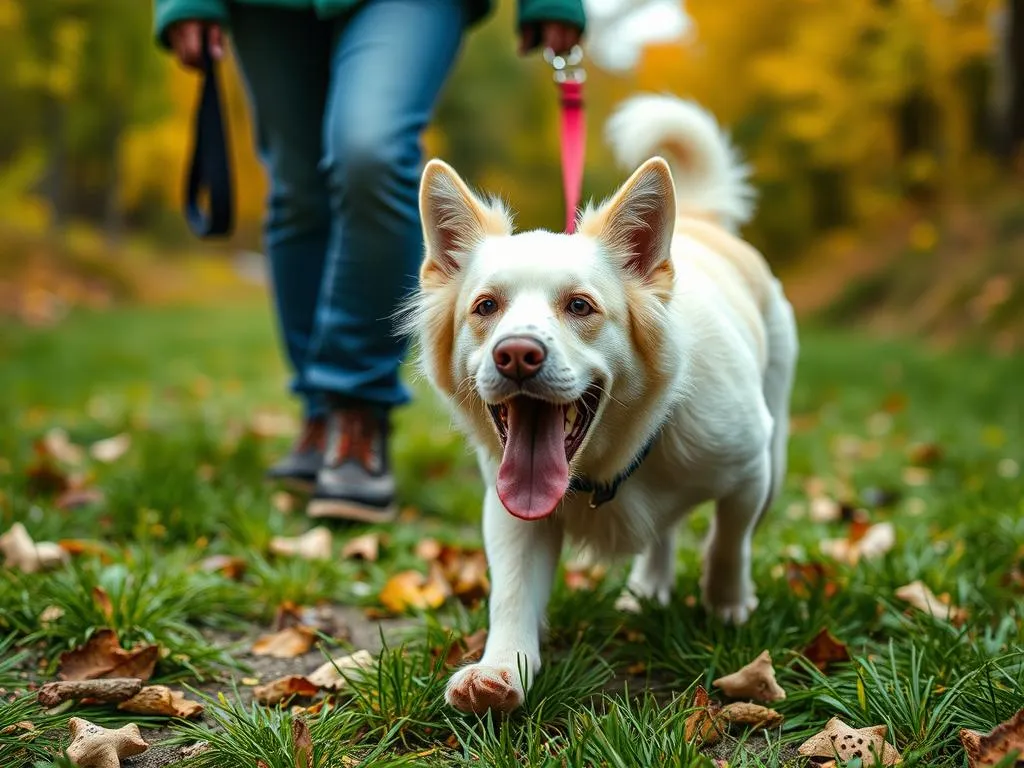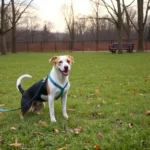
Introduction
Walking your dog is not just a routine chore; it’s an essential part of their physical and mental health. Regular walks help maintain your dog’s fitness, provide mental stimulation, and encourage positive social interactions. However, many pet owners face a common challenge: how to stop a dog from getting distracted on walks. Dogs are naturally curious creatures, and their daily strolls can become a gauntlet of distractions, from other animals and people to enticing scents.
In this article, we will explore actionable strategies to help you keep your dog focused during walks, ensuring a more enjoyable experience for both of you.
Understanding Dog Distractions
Types of Distractions
A variety of distractions can sidetrack even the most well-trained dogs during walks:
-
Visual Distractions: These include other dogs, people, cars, and various wildlife. A simple walk can turn into a theatrical performance of sights that can easily capture your dog’s attention.
-
Auditory Distractions: Loud noises from traffic, barking dogs, or even construction work can pull your dog’s focus away from you.
-
Olfactory Distractions: Dogs have an extraordinary sense of smell, and they can easily be captivated by scents from other animals, food, or plants they encounter along the way.
Why Dogs Get Distracted
Understanding why your dog gets distracted can help you better manage their behavior.
-
Natural Instincts and Behaviors: Dogs are driven by instincts, including prey drive and curiosity. These instincts can lead them to chase after something as simple as a squirrel or investigate an intriguing scent.
-
Lack of Training or Focus: If your dog hasn’t been trained to focus on you during walks, they may not see the need to tune out distractions.
-
Importance of Socialization: Early socialization plays a crucial role in how a dog reacts to distractions. A well-socialized dog is often more comfortable in public spaces and less likely to be overwhelmed.
Preparing for the Walk
Choosing the Right Environment
One of the first steps in how to stop a dog from getting distracted on walks is to select the right environment.
-
Quieter Routes: Choose routes that are less busy, especially during training sessions. Parks during off-peak hours or quiet residential streets can provide a more controlled setting.
-
Fewer Distractions: Identify areas where there are fewer dogs, people, and loud noises. This will help your dog learn to focus on you without overwhelming stimuli.
Proper Equipment
Having the right equipment can make a significant difference in keeping your dog focused.
-
Leash Selection: Opt for a sturdy leash that gives you control. Standard leashes are often better than retractable ones for training purposes.
-
Harness Options: Consider using a harness designed for control. Harnesses can help distribute pressure evenly and reduce pulling.
-
Training Tools: Utilize tools such as clickers and treats to reinforce positive behaviors. Toys can also be a great way to redirect attention during walks.
Training Techniques to Keep Your Dog Focused
Basic Obedience Training
Training your dog in basic commands is fundamental for maintaining focus during walks.
-
Importance of Commands: Commands like “sit,” “stay,” and “heel” are essential for establishing control.
-
Teaching Commands Effectively: Use positive reinforcement methods to teach these commands. Consistency and patience are key.
Focus Exercises
Focus exercises can help your dog learn to maintain eye contact, which is crucial in distracting environments.
-
Techniques: Gradually teach your dog to look at you when you say their name or use a command.
-
Treat-Based Rewards: Use treats to reward your dog for maintaining eye contact, reinforcing the behavior.
Redirecting Attention
Sometimes, despite your best efforts, dogs may still get distracted. Here’s how to redirect their attention.
-
Using Toys and Treats: Carry a favorite toy or treats to regain your dog’s focus when they get sidetracked.
-
Practicing “Leave It”: The “leave it” command can be practiced in various environments to help your dog learn to ignore distractions.
Creating a Routine
Establishing a Consistent Walking Schedule
Creating a routine can significantly affect your dog’s behavior during walks.
-
Benefits of Routine: Dogs thrive on consistency. A regular walking schedule helps them anticipate and prepare for their walks.
-
Consistency: Over time, consistency can help reduce distractions as your dog learns what to expect.
Incorporating Short Training Sessions
Integrate training into your walks to keep your dog focused and engaged.
-
Tips for Integration: Incorporate short training sessions during your walks. Practice commands or focus exercises at regular intervals.
-
Balancing Exercise and Training: Ensure that training doesn’t overshadow the enjoyment of the walk. Keep sessions brief and fun.
Managing External Distractions
Encountering Other Dogs or People
When you encounter other dogs or people, having a strategy can help keep your dog focused.
-
Strategies for Passing: Teach your dog to ignore other dogs by practicing walking past them calmly. Use treats to reinforce good behavior.
-
Managing Excitement: Techniques such as changing direction or using a firm command can help manage your dog’s excitement around new people.
Dealing with Sudden Noises
Unexpected noises can startle dogs and divert their attention.
-
Desensitizing Your Dog: Gradually expose your dog to loud sounds in a controlled environment. Use treats to create positive associations.
-
Keeping Calm: If your dog reacts to a sudden noise, remain calm. Use soothing commands to help them relax.
Using Positive Reinforcement
Rewarding Focused Behavior
Positive reinforcement is a powerful tool in training.
-
Importance of Immediate Rewards: Reward your dog immediately when they display focused behavior. This reinforces the connection between good behavior and rewards.
-
Examples of Effective Treats: Use high-value treats that your dog loves to maintain engagement and motivation.
Building Up to Longer Walks
Gradually increasing the duration of your walks while maintaining focus is an effective strategy.
-
Assessing Progress: Monitor your dog’s behavior and comfort level during walks. If they maintain focus, you can slowly increase the length.
-
Recognizing Limits: Every dog has different limits. Pay attention to signs of fatigue or stress.
Troubleshooting Common Issues
Stubbornness or Lack of Interest
If your dog shows stubbornness or disinterest, you may need to adjust your approach.
-
Identifying Reasons: Determine if there are underlying issues, such as health problems or lack of motivation.
-
Adjusting Training Methods: Tailor your training methods to suit your dog’s personality. Some dogs may respond better to different techniques.
Reactivity to Distractions
Understanding and managing reactivity is crucial for focused walks.
-
Understanding Reactivity: Reactivity can stem from fear, anxiety, or overstimulation. Recognize the triggers for your dog.
-
Managing Reactivity: Techniques such as gradual exposure and positive reinforcement can help reduce reactivity over time.
Conclusion
In conclusion, knowing how to stop a dog from getting distracted on walks involves understanding the types of distractions dogs face and employing various strategies to keep them focused. From selecting the right environment and using appropriate equipment to incorporating training techniques, each step plays a vital role in creating a more enjoyable walking experience for you and your dog.
Remember to be patient and consistent with your training. The benefits of distraction-free walks extend beyond the physical; they enhance the bond between you and your dog, making each walk a fulfilling adventure. With dedication and practice, you can transform your dog’s walks into a focused and rewarding experience for both of you.









